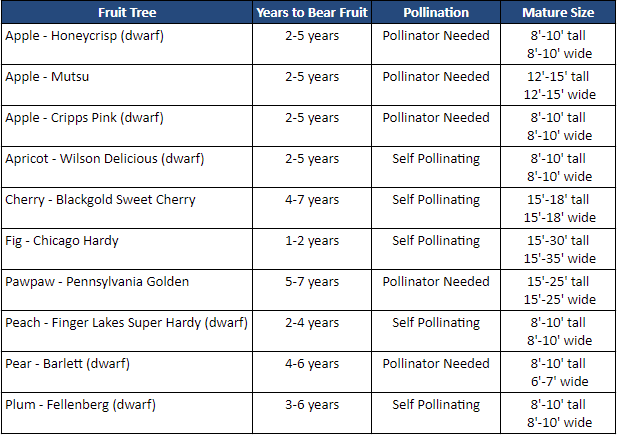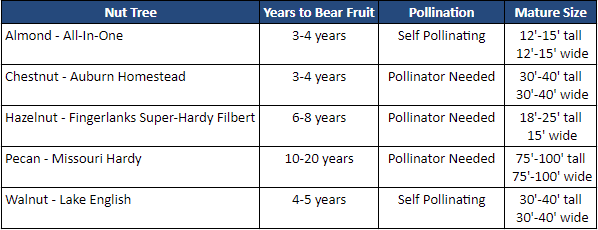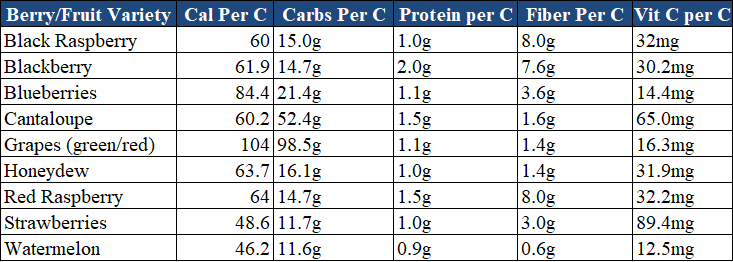The following article was submitted to James Wesley Rawles’ SurvivalBlog website in May/June of 2021. Most of the content made it into my book Preparing to Prepare. I thought my readers might like a condensed source for this information.
When someone says the word ‘orchard,’ most people begin to immediately conjure images of fall and vast acres of fruit trees, hay rides, pumpkin patches, corn mazes, apple harvests, making cider, etc. To those with a preparedness mindset though, the word ‘orchard’ also implies benefits like self-sufficiency, attraction of wild game for hunting/trapping, diversified protein sources, fur for blankets, boots, hats, coats, and gloves, as well as bartering. However, the term ‘orchard’ can have broader connotations beyond your typical fruit tree acreage. For many, myself included, the term ’orchard’ stretches beyond fruit trees and includes nut trees, berry bushes, vine fruit, and beekeeping.
When you, or your family, are reviewing and considering a land purchase, you would do well to take into the account your ability to incorporate some or all of the options noted previously (fruit/nut trees, berry bushes, vine fruits, and beekeeping). Having the ability to incorporate all of the varieties noted into the broader definition of an orchard helps everyone. You, your family, your group/community, and wildlife all can benefit from the planning of this resource. I’ve added wildlife because fruit and nut trees attract them in droves and will allow you to diversify your food options (protein) year round and during a collapse.
If you think you might want to plan an orchard, I would definitely recommend doing two things:
Learning your plant hardiness zone is fairly self-explanatory. Once you know that, you can begin researching which types of trees, shrubs, and vine crops are suitable to your location, or future location. To that end, the first place I recommend looking is online. You’ll be able to gain a solid knowledge base and generate questions that you can either try and answer on your own with additional research or bring the questions with you to a local arborist or nursery. The online resources can also lead you to the purchase of valuable and reputable non-fiction books for your library from highly knowledgeable and respected authors, researchers, growers, and scientists.
When you begin your online research, I recommend the Stark Bros website and that can be found here: https://www.starkbros.com. I’ve found that their website has one of the easiest interfaces for consumers to navigate and there’s a wealth of information available about fruit and nut trees as well as a nice variety of berry plants and bushes. As an example, Stark Bros. published ‘Growing Guides’ for individual fruits, nuts, and berries as well as a homestead guide for fruit trees. You can find that information using these two URL’s:
For all of the information available online, I would still highly recommend that you procure additional and specific information from local arborists and nurseries. They will be able to confirm or correct any information you find online and answer the questions you generated while you were doing your research. Local resources are going to be your most knowledgeable and easily reachable resources outside of local clubs and organizations. All of these local resources will help better direct your knowledge base as it pertains to your USDA Plant Hardiness zone.
Fruit Trees
Below is some of the research I did for myself on fruit and nut trees that were compatible with my Plant Hardiness Zone (6a). Take note of the fruit types that state ‘Poll Req’ (Pollinator Required) as opposed to ‘Self Poll’ (Self Pollinating). Pollinator Required means that you will need to plant more than one of these trees in order for the blossoms to become fruit. Also, notice that I chose dwarf species when possible. This is a personal preference and was done solely for ease of harvesting and tree maintenance.
Pay close attention to spacing, maturity, and bloom time recommendations offered by your assorted resources (online, books, and local). Additionally, you’ll be able to read up on any provided nutritional information for the raw fruit. One of the things you’ll notice right away is that the fruits are high in carbohydrates and low on protein due to their sugar content.
Nut Trees
In order to provide an alternative source of protein, nut trees should be incorporated into your orchard. However, this is easier said than done. Planting nut trees in my Plant Hardiness Zone (6a), like planting fruit trees, automatically creates a limiting factor due to temperature variations. In addition, nut trees add an additional component of sheer size, as they are generally much larger than their fruit bearing brethren. However, there are still plenty of options available to me in my zone.
When selecting your orchard location, pay particular attention to the track of the sun. You’ll want the nut trees on the north side of the orchard so they don’t shade the fruit trees.
Can you imagine what you’d be able to barter for with a well thought out orchard at your disposal with just the fruit and nut trees? The possibilities are seemingly endless if you plan.
Berry Bushes & Vine Fruits
Another way to procure a source of fruit is to plant berry bushes and vine fruits like grapes. Other vine fruits include cantaloupe, melon, watermelon, etc. but these are usually in the garden proper. As was noted in the Fruit Trees section, fruits, or in this case berries, are high in sugar and therefore carbohydrates, but lack a lot of protein. On the plus side, they attract alternative protein food sources in the form of wildlife, particularly birds. Therefore, invest in an air rifle or become adept at using a slingshot and procure many rolls of reusable plastic bird netting if you want to save your harvest. That being said, there are a few things you’ll need to know about berry bushes. For example:
Berries do very well in pots so don’t discount deck/patio space in your planning
Don’t place red raspberries within 100’of black raspberries
Black raspberries and blueberries are high in antioxidants so there’s some medicinal properties that can be utilized as well
Here’s some nutritional information that I cobbled together from a variety or resources that’ll help provide some clarity as to the benefits of berry bushes and vine fruits in your orchard/garden planning. Take note of the Vitamin C content. This is an important vitamin and will help keep medical issues like scurvy at bay when transportation systems involving cross country trucking/rail and/or international shipping breakdown. Additional, the fiber content will help keep everyone regular.
Of course, there are dozens of different types of fruit vines and berry bushes. Do your research and choose wisely. I did find an article during my research that was extremely helpful in the building and expanding of my own knowledge base for this topic. The article is titled “25 Types of Berries: List of Berries With Their Picture and Name (Identification Guide)” and steps through a large variety of berry varieties. That article can be found here: https://leafyplace.com/types-of-berries/. Review the article and then research which varieties are compatible with your Plant Hardiness Zone.
The key is to determine what grows in your location and what level of tartness is palatable to you, your family, and/or group/community. Beyond that, if you have the ability to dehydrate the berries or fruit they become extremely lightweight and make an excellent barter item or as a snack when out hunting or hiking. These options don’t account for the pies, jams, jellies, wines, and toppings that can be made from the fruit. Be careful with the strawberries though. They are super spreaders in the garden plot so they really need to be segregated and walled off with rock or timbers so they don’t grow where you don’t want them. If anything ever needed to be in a pot or container, it was strawberries.
Beekeeping
The last element of a robust orchard is beekeeping. I would highly recommend that you begin learning everything you can about this skillset. If you want a successful vegetable garden, orchard, and medicinal garden you are going to need pollinators. Having a couple beehives will definitely help to ensure a successful harvest. The general rule of thumb is 1-2 hives per acre. Personally, I think it would be preferable to stack the deck in your favor and have your own source of pollinators as opposed to relying solely on the whims of Mother Nature, which can be fickle at times.
Mother Nature isn’t the only fickle thing about incorporating beehives though. Most city and town ordinances prohibit the housing of bee colonies on your property within city limits. Therefore, this approach is really best suited for those that are not subject to zoning and HOA rules.
Doing a basic web search for the term ‘beekeeper training’ will yield a wide variety of options available to you in your area for acquiring this skillset. Some classes are online while others can be attended in person at college extensions or beekeeper clubs. Additionally, you can contact established beekeepers in your area, rent hive boxes, and share in the spoils of the collected honey. Having access to a decent supply of honey is extremely beneficial as the by-product of all that pollination is a natural sweetener as well as a highly valuable medicinal ingredient.
Water
The last aspect of an orchard that needs to be discussed is the incorporation of water. This key element is needed most as the orchard is being installed and the plants and trees are growing toward maturity and developing their tap root. Water is going to be the most labor intensive aspect of installing an orchard. Preferably, install the water lines/piping before you install the trees so you can account for the spacing required between trees/crops. The disturbed dirt from the line installation is also a very good visual indicator of where not to dig when planting your trees, bushes, and vines.
Your options for water sources are varied and depend entirely on what is available to you on your particular plot of land/acreage. Typically, your orchard isn’t near a water line so your best bet is going to be to install a hand pump. Or, depending on the size of the orchard, multiple hand pumps. Regardless of what solution you employ, it must be easily winterized (frost free). There are kits available everywhere online for the hand pump well piping and handles so do a basic search and read, read, read. Then ask more questions and continue reading until you’re firm in your knowledge.
As much as I don’t want to recommend this particular platform, you’ll be able to watch countless hours of video where people have chronicled the installation of a hand pump on YouTube. To get you started in the building of this particular piece of knowledge, start with this video from the “Through Our Eyes” channel and go from there: Simple Pump Deep Well Hand Pump Install.


